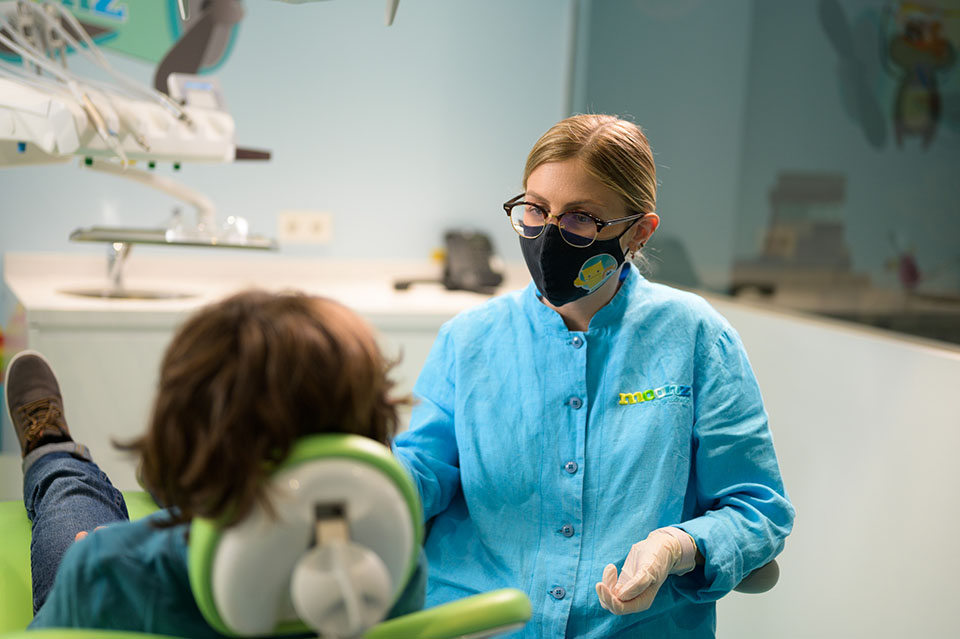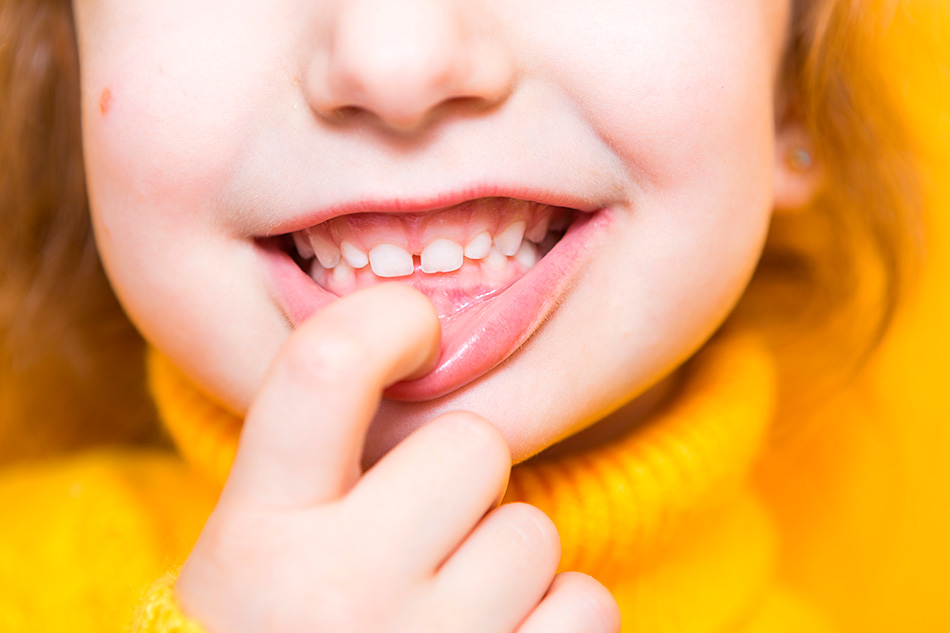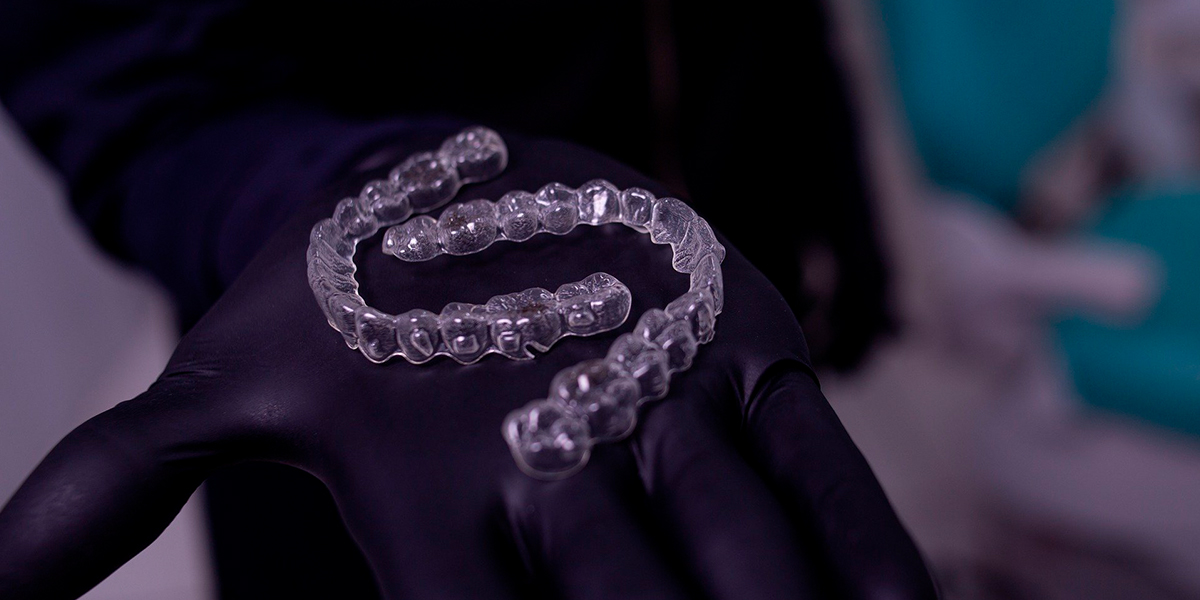Swallowing is the act of passing food from the mouth into the oesophagus.
It is a rather complex reflex involving various structures of the respiratory, digestive, and neurological systems, among others, in a coordinated way.
This process differs between children and adults. This is because it changes as the baby develops. If the child does not correct the correct position of the mouth structures, atypical swallowing occurs. The orthodontics for children of Moonz can help with the treatment of atypical swallowing.
What is atypical swallowing?
Atypical swallowing or infantile swallowing in children is a disorder that prevents correct swallowing. It results from poor positioning of the tongue when swallowing food.
The name is derived from the way children swallow before the milk teeth erupt, because when chewing they press the tongue against the teeth instead of against the palate.
As soon as the first milk teeth appear, they start to form a kind of barrier for the tongue to position itself properly in the oral cavity. This is how lip closure and thus proper chewing is achieved.
Atypical swallowing is one of the most common habits in children.
However, it can also be persistent in adulthood if it is not corrected in time. This is because the orofacial structures are affected, i.e., the jaw, palate, teeth, gums, lips, and tongue.
If any of these elements move poorly when swallowing, it can lead to dental problems, speech disorders and even breathing and digestive problems.
What are the causes of atypical swallowing?
Atypical swallowing has several causes, including changes in orofacial development and poor dental habits.
As for the organic changes:
- Hypotonia: A decrease in muscle tone affecting all muscles involved in chewing.
- Ankyloglossia: Difficulty in moving the tongue because the lingual frenulum is too short.
- Malformation of the jaw bones: Which causes problems with the bite.
- Genetic factors: Can affect the morphology of the airway or palate.
- Macroglossia: Also known as a wide tongue or thickened tongue which, because it is larger than normal, makes chewing difficult and limits its mobility.
- ENT problems: Frequent episodes of tonsillitis, allergic rhinitis, adenoid, or tonsillar hypertrophy, to name a few.
Acquired bad habits:
- Use of a bottle or dummy from eighteen months, more than recommended.
- Prolonged thumb sucking: the habit of thumb sucking.
- Mouth breathing instead of nose breathing can lead to problems with the palate, jaw, tongue, teeth and throat.
- Incorrect use of baby food beyond the recommended age: this affects proper bone and muscle development and leads to chewing problems.
- Onychophagia: the habit of biting nails.
- Sucking the cheek, tongue, and lip.
Symptoms of atypical swallowing
The main symptoms of atypical swallowing are:
- Lack of lip closure: the lower lip is normally behind the teeth of the upper arch.
- The tongue is between the teeth of both arches and not on the roof of the mouth.
- Constant chewing and swallowing noises.
- Delayed or advanced upper or lower jaw.
- Mouth breathing predominant.
- Teeth of upper and lower arch not in contact with each other.
- Accumulation of food debris in the mouth.
- Open bite: There is an anatomical change in the position of the teeth.
- Excessive movements: It is common for them to frequently lift their head and tighten their lips and chin when swallowing. In this way they compensate for the lack of strength of the tongue.
- Chewing problems: Food is chewed weakly or only on one side, so that the food bolus is not formed properly.
- Difficulty pronouncing the phonemes /t/, /d/, /l/, /n/, /r/.
Consequences of atypical swallowing
The consequences of atypical swallowing are diverse, as it affects both the digestive process and oral health.
These include:
- Open bite: one of the most common malocclusions caused by the lack of contact between the front teeth of the lower and upper arches.
- Occurrence of diastemata (gaps between teeth).
- Speech disorders: Incorrect tongue position can lead to problems pronouncing certain phonemes such as /d/, /t/ or /r/.
- Tooth protrusion: also known as protruding teeth or “molars”, a problem with bite abnormality caused by incorrect tongue position that pushes the upper teeth outwards and causes an overbite.
- Poor palatal growth: the jaw and upper jaw do not develop properly, as do the dental arches, resulting in crowding and a narrow palate.
- Mandibular prognathism: also known as inverted dentition, due to excessive development of the lower jaw, where the lower incisors lean forward, and the tongue cannot push properly when swallowing.
- Constant drooling: both awake and asleep.
HOW TO TREAT ATYPICAL SWALLOWING
In the case of atypical swallowing, the patient must first be thoroughly and comprehensively diagnosed. Subsequently, possible orofacial changes and their causes should be evaluated.
Once this has been investigated, it is important that multidisciplinary treatment is carried out. This will involve both the orthodontist and the speech therapist.
The joint approach of both guarantees a better result and shortens the treatment time.
The orthodontist’s work is based on restoring the functionality of the jaw. The main goal is to prevent complications related to jaw development and other occlusion problems.
If treatment is carried out at an early age, it is done through interceptive orthodontics to correct any problems of skeletal origin.
The speech therapist focuses on the way of swallowing to correct it and on the correct pronunciation and phonation of words.
He or she will perform myofunctional therapy (MFT): a series of exercises to create new patterns for the articulation of words and muscle patterns in swallowing. In the process, the imbalance of the orofacial muscles is corrected, and bad habits are avoided.
However, there may also be cases where surgery is required. This is the case when there is an anatomical change that affects the correct position of the tongue and thus its function.
Most commonly, this is adenoid or tonsillar hypertrophy and a short lingual frenulum, which need to be treated surgically.
In short, early diagnosis of atypical swallowing is essential to avoid numerous problems with occlusion, feeding and jaw development.




























